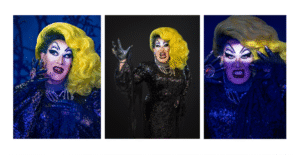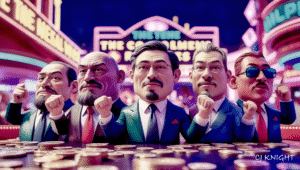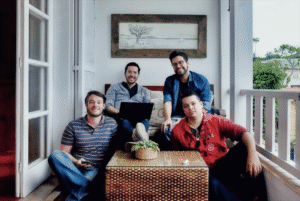Move over, Picasso: AI is the new artistic design co-pilot. Follow these master tips and tricks to quickly craft scroll-stopping imagery in minutes and put joy back into your daily workflow.
In an era where creativity meets machine-powered technology, the digital landscape is undergoing a seismic shift. The creator economy, valued at a staggering $200 billion worldwide in 2023, is no longer just a niche market — it’s a driving force in the global digital ecosystem. At the forefront of this revolution is Generation Z, whose digital nativity and innovative spirit are reshaping how we conceive, create, and consume content.
This isn’t just a youth movement, though. With 63 percent of independent creators aged 40 or younger, we’re witnessing a generational change of the guard in the creative industries. These digital pioneers are not just adapting to new technologies — they’re actively seeking out tools that can amplify their creative output and streamline their workflows.
Enter AI-powered design tools — the new secret weapon in the creator’s arsenal.
For marketers, PR professionals, and designers alike, these innovative AI platforms and tools offer more than just a competitive edge; they represent a fundamental shift in how we all approach creative work today. The allure? The ability to work smarter, faster, and more efficiently — a boon not just for creators but for their clients as well.
But in this brave new world of AI-assisted creativity, knowing how to effectively wield these tools can mean the difference between standing out and getting lost in the digital noise. That’s why expert guidance is invaluable. The advice and strategies we’re about to delve into aren’t just tips and tricks — they’re a roadmap to thriving in the AI-powered marketing era.
So, whether you’re a seasoned pro looking to stay ahead of the curve or a newcomer eager to make your mark, buckle up. We’re about to embark on a journey that will transform how you approach digital art and imagery creation. Get ready to unleash your creativity, supercharge your workflow, and craft visuals that don’t just catch the eye — they stop the scroll.
Masterful AI Prompting Tips
Crafting the perfect prompt for AI-generated art is part science, part art form. Whether you’re a newbie or looking to level up your skills, these expert tips will help you create scroll-stopping visuals in no time.
Think and Write Visually
It might sound basic, but the key to a great prompt is thinking visually. Imagine you’re creating a storyboard for your desired image:
- Be specific about colors, artistic styles, and the time of day
- Decide on the perspective: close-up or far away?
- Consider the purpose: Is it for a graphic novel, print ad, or social media campaign?
Example: “Create a close-up portrait of a young woman with piercing green eyes and curly red hair, in the style of a Rembrandt painting. The lighting should be warm and soft, as if lit by candlelight. This image will be used for a historical fiction book cover.”
Name-Drop with Caution
For now, it’s generally acceptable to reference specific artists or styles in your prompts:
- “In the Cubist style of Picasso”
- “Resembling an Herb Ritts photograph”
- “Pop art in the vein of Andy Warhol”
Remember, this might change in the future as AI ethics evolve, so stay informed about best practices.
Leverage Built-in Styles
Many AI art platforms offer pre-set filters or styles. Experiment with these to quickly achieve different looks or to inspire new ideas for your custom prompts.
Iterate and Refine
The beauty of AI art generation is in the iteration:
- Start with a basic prompt
- Save or star the results you love (this helps the AI learn your preferences)
- Identify missing elements or areas for improvement
- Adjust your prompt: try changing clothing, time of year, hairstyle, eye color, etc.
Example evolution:
- “A cat sitting on a windowsill.”
- “A ginger tabby cat sitting on a wooden windowsill, looking out at a rainy day.”
- “A fluffy ginger tabby cat with green eyes, sitting on an antique wooden windowsill. Outside, it’s a misty autumn morning with colorful leaves falling. The image should have a cozy, nostalgic feel, perfect for a greeting card design.”
Remember, the key is to be descriptive, specific, and willing to experiment.
Same Prompt, Different Masters
This exhibit showcases the versatility of AI in art creation. Two pieces stand side by side, born from identical prompts but channeling distinct artistic voices:
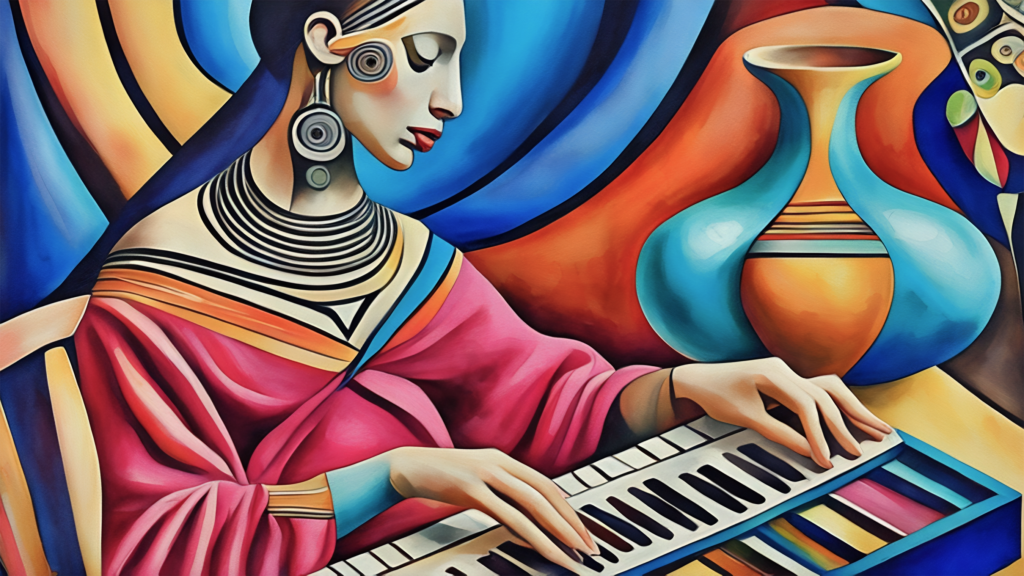
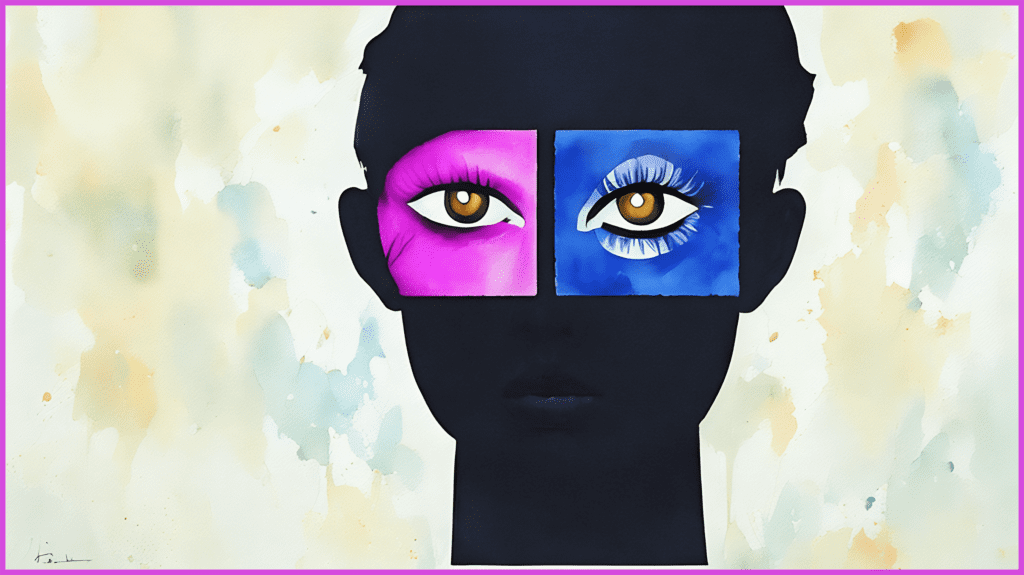
On one canvas, the fractured planes and bold geometry of Picasso’s Cubism bring a new dimension to the subject. Below it, Warhol’s pop art influence transforms the same concept with vivid colors and iconic repetition.
The two pieces were created using the exact same prompt, with the exception of the artists’ names (in the artistic style of Picasso vs. Warhol). The original “first press” of the AI art engine’s output was then fine-tuned via the new GFX filters in the BeFunky platform.
This juxtaposition invites viewers to explore how AI interprets and applies diverse artistic styles, blurring the lines between human creativity and machine learning.
AI Art Platforms: Finding Your Perfect Match
Not all AI chatbots or platforms are created equal. As you experiment with different tools of the trade, you’ll likely find favorites that suit your specific needs. Here’s a comparison of some popular platforms to help you navigate the AI art landscape:
Shutterstock: Professional-Grade AI Generation
Shutterstock, known for its vast collection of stock imagery, has introduced an AI Generate engine that’s making waves in the design world.
Pros:
- User-friendly interface with diverse filters and art types
- High-quality output suitable for professional use
- Option to purchase rights for commercial use, including merchandise
Cons:
- Stringent safety controls may limit the creation of edgy or adult content
Best for: Professional designers, e-commerce store owners, and those needing high-quality, commercially usable AI-generated art.
Pro Tip: When considering using AI-generated art for merchandise or commercial purposes, factor in the cost of purchasing full rights. It’s an investment in future-proofing your work as AI regulations evolve.
Deal.ai: Versatility and Edgier Content
Pros:
- Multiple image generator apps with varied features
- Allows for the creation of more edgy or adult content (think PG:13 to R)
- Specific apps for scroll-stopping ads, book cover art, and hyper-realistic images
Cons:
- Output quality may not match Shutterstock’s standards in terms of overall size
Best for: Creators needing more flexibility in content type, especially for attention-grabbing advertisements or book covers.
BeFunky: AI-Powered Photo Editing
BeFunky shines in its ability to transform existing images with AI-powered filters and effects.
Pros:
- Works with existing photos or images
- Wide range of AI-powered filters and art styles
- Ability to mix and match styles for unique effects
- Easy transitions between realistic and artistic renderings
Cons:
- Relies on existing images rather than generating from scratch
Best for: Photo editors, social media content creators, and those looking to add artistic flair to existing images.
Remember, the “best” platform depends on your specific needs, budget, and the type of content you’re creating. Don’t be afraid to experiment with different tools to find your perfect AI art companion.
Unleash Your Inner AI Artist: The Future is Now
As we wrap up this initial journey into the world of AI-assisted art creation, remember: the only limit is your imagination. Whether you’re a seasoned pro or a curious beginner, now is the time to dive in and start experimenting. Don’t be afraid to make mistakes — that’s where the magic often happens!
For those just starting out, treat AI as your creative playground. Try different prompts, explore various platforms, and watch in awe as your ideas come to life in ways you never thought possible. It’s not about replacing your creativity but amplifying it.
To the decision-makers out there: investing in AI-powered design tools isn’t just a cost — it’s an investment in your team’s productivity and creativity. By providing your staff with a variety of AI platforms to test and use, you’re not just boosting efficiency; you’re giving your lonely artists and designers a smart, tireless co-pilot to help them meet (and often beat) those tight deadlines.
Remember, in the fast-paced world of digital creation, embracing AI isn’t just keeping up — it’s staying ahead. So go forth, create, and let your AI-enhanced imagination run wild. The future of design is here, and it’s waiting for you to make your mark — together.



